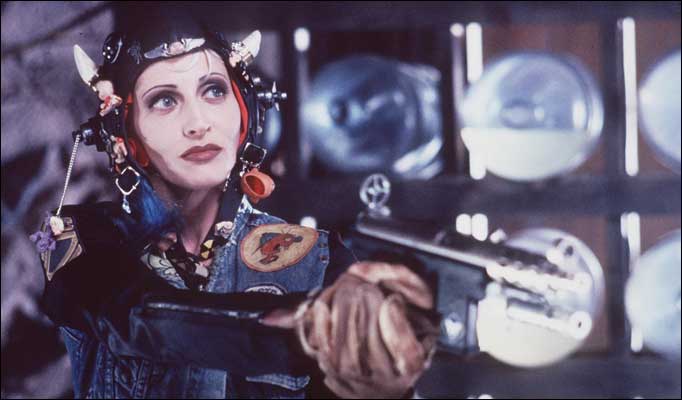
According to Oxford dictionary, guilty pleasure is “something, such as a film, television programme, or piece of music, that one enjoys despite feeling that it is not generally held in high regard”. For this occasion, let’s paraphrase this idiom as the cinematic offerings which this writer likes (or even loves) and is not afraid to admit, while the critics, and in some cases, most of the audience, are (or were) not particularly fond of.
As the title suggests, the focus will exclusively be on the female leads, with a few carefully picked exceptions. The “portraits” will be arranged chronologically and subjectivity will be held under control as much as possible.
1. Modesty Blaise / Modesty Blaise (Joseph Losey, 1966)
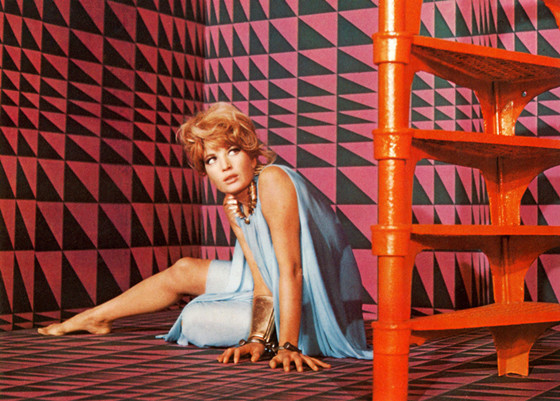
Foppish and whacky as the kaleidoscopic interiors of the antagonist Gabriel’s Mediterranean villa, Losey’s satirical and feministically charged spy spoof adaptation of Peter O’Donnell’s comic book stars the charming Monica Vitti as the titular heroine hired by the British government secret agency to thwart a diamonds heist.
Whether reclining in bed, smiling seductively or changing eccentric hairdos and fashionable attires in a blink of an eye, the enigmatic Modesty proudly waves the flag of girl empowerment, always managing to find her place (and freedom) in the world dominated by men. To dub her “female James Bond” would be an understatement, given that Vitti outshines many of her colleagues who played Fleming’s character of that undying franchise.
Called “son” by her Sheik friend, “bloody minded female” by her ex-husband and “suffragette” by the evil mastermind, she rises above each occasion and demonstrates cleverness, sharp wit and good fighting skills (albeit, sometimes, in the scenes with a painfully obvious stunt double). She also has the hots for her equally resourceful sidekick Willie Garvin (Terence Stamp) who’s the only one allowed to address her as princess.
2. Barbarella / Barbarella (Roger Vadim, 1968)
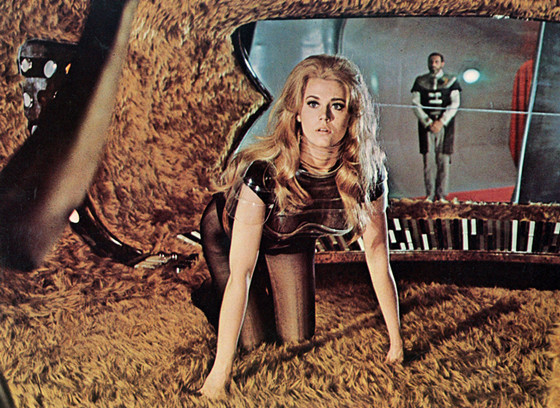
Beginning with the legendary zero gravity striptease, the cult favorite “Barbarella” is another great example of the swinging sixties. Based on the French comic of the same name, it is set in a pacified, sexually liberated universe in which everyone is greeted by love, while nudity is not shunned, even during the state affair discussion with Mr. President.
In the warmth of a fluffy spaceship insides, we are introduced to a titular “5star Astro-Navigatrix” – initially naked, then dressed in skimpy clothing soon to get torn by murderous dolls. Tasked with finding a “neurotically irresponsible” scientist, Duran Duran, Barbarella (portrayed by the lovely, blue-eyed Jane Fonda) finds herself in a lot of damsel-in-distress situations, but somehow always emerges as a winner.
Radiating innocent eroticism and Betty Boop-like naiveté, she parades through the outrageous sets in various outfits that will inspire Saturday-morning cartoons, such as “He-Man and Masters of the Universe” and, later, its girly counterpart “She-Ra: Princess of Power”.
Whomever she encounters, from a hairy “catchman” to a blind “ornithanthrope”, is instantly enchanted by her sexy appearance and/or voice. Barbarella is probably the only heroine who is tortured by pleasure and gets to smoke the essence of men. And she certainly is “Pretty Pretty” as The Great Tyrant (Anita Pallenberg) adresses her.
3. Annie / Death Race 2000 (Paul Bartel, 1975)
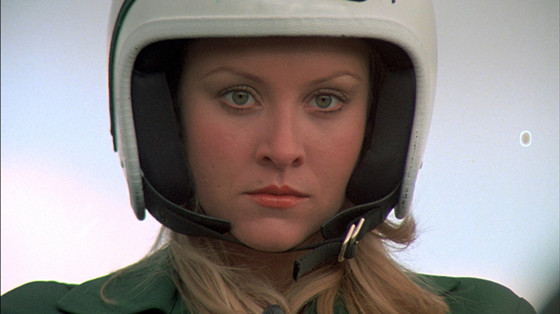
Produced by the “The Pope of Pop Cinema” Roger Corman, “Death Race 2000” is a political satire “disguised” as an exploitative action flick which takes place in a dystopian society of the United Provinces of America, and revolves around a dangerous sport event – an opiate for the masses.
Low-brow and macho oriented, with David Carradine as the protagonist Frankenstein and Sylvester Stallone as his adversary Machine Gun Joe Viterbo, it does have a few interesting female characters, Annie (Simone Griffeth) being the most developed. A nurse, mechanic and granddaughter of the resistance leader, Thomasina Paine, she enters the contest as Frankenstein’s navigator, only to lead him into a lethal trap of her vengeful granny’s plot.
However, in the (trashy) story’s course, she learns that her partner is not what everyone thinks he is, so they are mutually transformed to the sounds of tires screeching and the psychedelic score. Both fragile and strong, Annie bravely risks her life for the rebels’ cause and for Frankenstein whom she is obliged to obey no matter how hard (and not to mention, potentially deadly) her chores are.
4. Zula / Conan the Destroyer (Richard Fleischer, 1984)
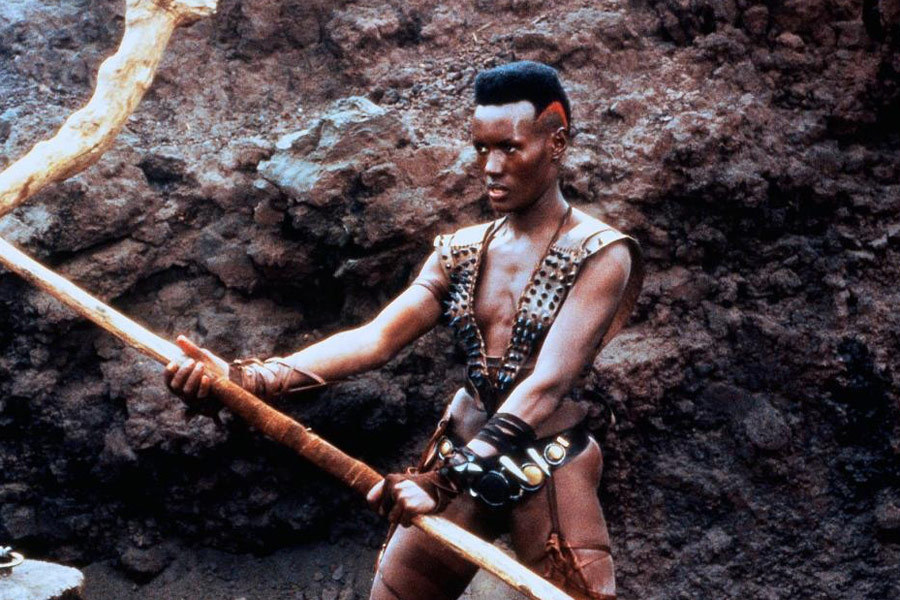
Like “Barbarella”, the sequel to John Milius’s polarizing “Conan the Barbarian” comes from Dino de Laurentis’s production. This time, Conan leads a band of outcasts on a perilous quest initiated by the treacherous queen Taramis and the most diverting member of his entourage is an Amazon-like warrior, Zula, played by the inimitable Grace Jones.
In her first mainstream role, the famous Jamaican singer, songwriter, lyricist, supermodel, record producer and actress leaves a lasting impression with her war cries, imposing looks and penetrating gazes, notwithstanding the limited screen time (and the unnecessary suriphobic detail).
Walking barefoot over rough terrain, she seems more hardy than Conan who wears boots and who, in the moment of insobriety, humiliates her by calling her weapon a “toothpick”. However, being indebted to him, she remains unprovoked. Besides, she handles her staff good enough to be able to defeat several man-at-arms single-handedly.
Storywise, Zula is given importance in the film’s culmination – eventually, her skills are recognized, so she earns a well-deserved promotion.
5. Supergirl / Supergirl (Jeannot Szwarc, 1984)
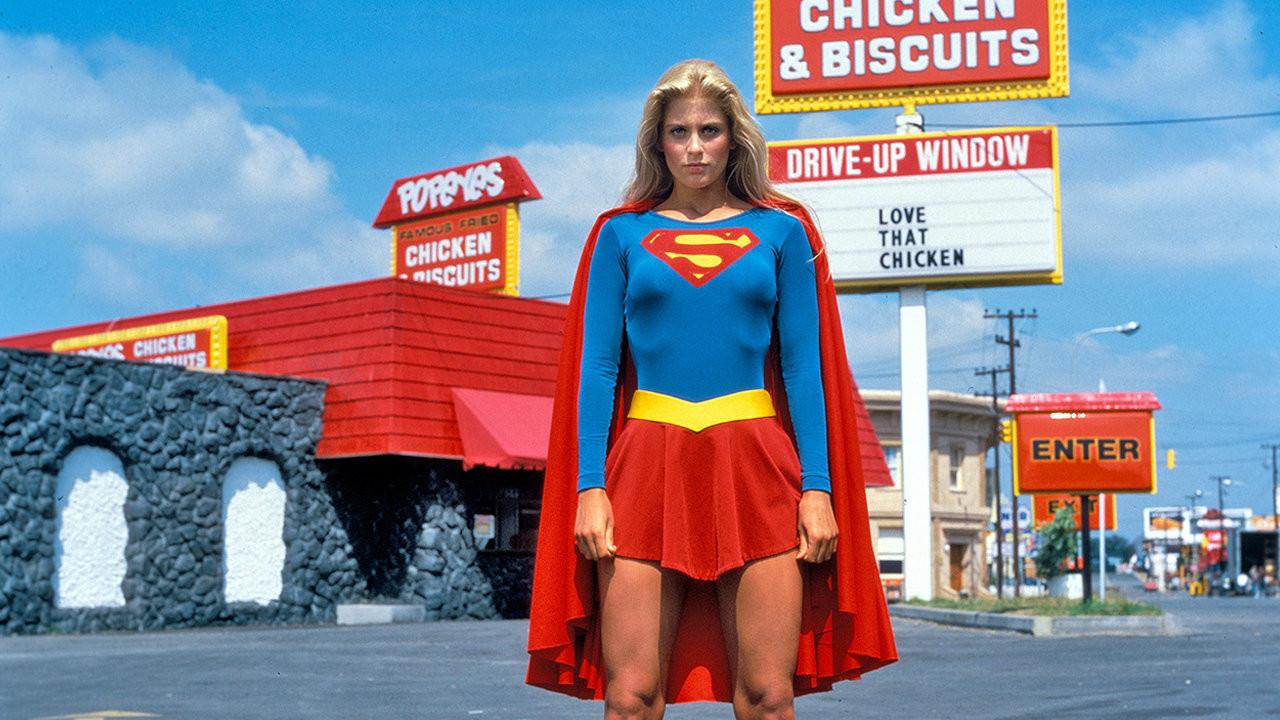
From an isolated Kryptonian community Argo City of inner space (whose architects were probably inspired by Gaudi’s designs), comes Kara Zor-El (Helen Slater) – Kal-El/Superman’s young cousin. Partially responsible for the incident which leaves the city without its power source – an item called Omegahedron – she comes to Earth in order to undo the wrong and save her people.
During her journey to outer space, she transforms into Supergirl and identifies as a schoolgirl, Linda Lee – a better cover than Clark Kent, considering the hair color change. Uninitiated to our world, she becomes the (comic relief) heroine of a supernatural coming-of-age + good vs. evil story.
On one hand, she experiences first love and has to deal with the homework and bullies, but on the other, she faces the threat of an occultist, Selena (a memorable camp performance by Faye Dunaway), who acquires Omegahedron by accident.
At some points (aerial dance in the forest and sleeping next to a bunny), “Supergirl” feels almost like a Disney movie, but it does enter the darker mode later, with a bulldozer gone wild, an invisible monster and the Phantom Zone. Slater is graceful and quite likeable, yet it’s Dunaway who steals the (cheesy) show.
6. Sonja / Red Sonja (Richard Fleischer, 1985)
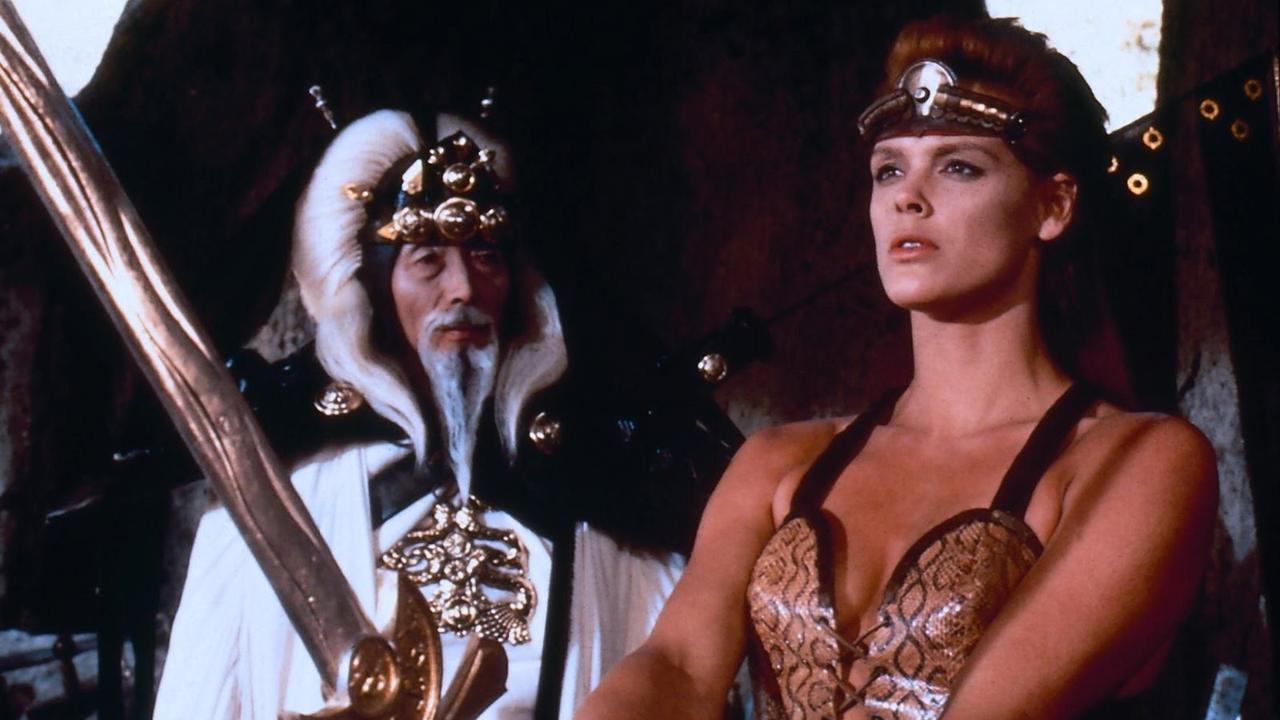
Look at that – another Fleischer’s sword-and-sorcery offering. Inferior to its spiritual predecessor, “Red Sonja” introduces Brigitte Nielsen as the titular heroine – a fierce, red-haired protofeminist of a barbaric fantasy world which belongs to fictional Hyborian age. After she’s raped and her family murdered by the mad Queen Gedren’s soldiers, she sets out for revenge, and to retrieve a magic orb taken from her priestess sister.
Her (justified) hate for men doesn’t apply to Swordmaster who teaches her the way of a warrior and, with the appearance of the aforementioned orb’s master Kalidor (Schwarzenegger), it starts to fade. Initially, she’s willingly alone on her journey, but is soon joined by a spoiled prepubescent prince and his servant, as well as by Kalidor whose raw strength comes in handy.
Sonja might not be the best counterpart of Conan, but she knows how to re-educate a rude, arrogant little boy and is an equal match for Schwarzenegger’s character, or is it the other way around?